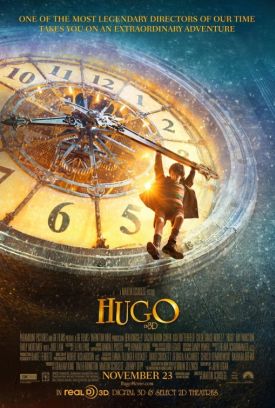Avatar and the Flight from Reality
From The New Atlantis, Spring, 2010Nathaniel Hawthorne once wrote a story called “The Artist of the Beautiful” in which a prototypical nerd (this was 1844 after all) with few social graces and no head for business turns a watch-maker’s shop into an artist’s studio where, ultimately, he creates a clockwork butterfly in every way indistinguishable from a real butterfly except in its being even more beautiful. Most of the story is about how misunderstood this nerdy clock-maker is — which may suggest how misunderstood the story often is — but I think it is about the fundamental mistake of supposing that the idea of artistic creation is not just to create something that is like reality but rather something that amounts to a new reality, a creation to rival God’s own. Indeed, as God was already fading out of the cultural picture by the mid-nineteenth century, the story presents us with a foretaste of our own time in which, to an ever greater extent, we expect the artist to become God.
Or, if not God, at least a sort of godling, who makes his claim on our attention not by the likeness of his creation to real things but to its originality and imaginative impact as a new reality all its own, more or less untethered to common or everyday reality. “Reality” itself is too problematical a concept to be of any artistic service — which is what frees him to become a fantasist. Hawthorne imagines the artist as a sort of Promethean hero, crashing through the barrier that separates art from reality to create not a mere representation of a butterfly but a sort of Butterfly 2.0: an improved version of, rather than an imitation of its original. His hero alludes to nature, rather than mimicking it, and this distinction is vital to understanding what has happened to art more than a century later in making the transition from modern to post-modern as well as in creating a new dress for our popular culture the full implications of which are still to be revealed. For now let us merely look at the fact that, as Kate Muir quoted “one big British movie honcho”as saying in The Times of London “After Avatar, film will never be the same again.”
In one sense, this is absurd. It is already the same again. James Cameron’s Avatar as a cinematic artefact is not essentially different from any other Hollywood blockbuster relying on spectacle, operatic passion and computer-generated imagery (CGI). It is not even different in any important way from Mr Cameron’s own Titanic, whose box office records (along with everyone else’s) it has now shattered. It just goes a little further down the same road by putting everything into 3-D, so presumably to emphasize the likeness to conventional reality of a film in which almost everything else is deliberately and quite spectacularly unlike conventional reality. The result is one of the most carefully worked-out fantasy worlds in the relatively short history of the fantasy genre, down to and including the entire language of the large blue anthropoids of planet Pandora, created for them by Professor Paul Frommer of the University of Southern California. While on planet Earth half of the 6500 languages spoken by actual people are expected to die out before the end of the century — the last native speaker of Bo, once spoken by tribesmen of the Andaman Islands in the Bay of Bengal, died just as Avatar was topping the all-time box-office charts — our popular culture triumphs in inventing an artificial language for a people who have never existed.
The cinematic language is also invented and artificial, however, and there, perhaps, Ms Muir’s honcho has a point. Just as, once, the difference between a neurotic and a psychotic was defined by saying that the former built castles in the air and the latter lived in them, so we may now say that the popular culture does not merely generate fantasies, it inhabits them, as it expects us, the audience to inhabit them. That is why, according to Ms Muir’s Times colleague, Kevin Maher, Avatar, especially in its 3-D version,
has been described as the first completely “immersive” film experience. And yet it is precisely this brief and bounteous immersion that can lead, according to an increasingly vocal number of Avatar fans, to a bad case of the blues. Recently, internet chat forums on the film’s fan sites have been clogged (one was closed after more than 1,000 posts) by viewers reporting feelings of depression and despondency after seeing the movie. On one site, a discussion called “Ways to cope with the depression of the dream of Pandora being intangible” featured myriad fans recounting just how repulsed they were . . . by the reality of life on Earth after witnessing the phosphorescent beauty of Pandora.
A similar but more positive view of Pandoran beauty is held by Carol Kaesuk Yoon, the author of Naming Nature (W. W. Norton, 2009), a book about the exciting science — or is it an art? — of taxonomy. Writing in the Science section of The New York Times, she is gratified to note that,
When watching a Hollywood movie that has robed itself in the themes and paraphernalia of science, a scientist expects to feel anything from annoyance to infuriation [sic] at facts misconstrued or processes misrepresented. What a scientist does not expect is to enter into a state of ecstatic wonderment, to have the urge to leap up and shout: “Yes! That’s exactly what it’s like!” So it is time for all the biologists who have not yet done so to shut their laptops and run from their laboratories directly to the movie theaters, put on 3-D glasses and watch the film Avatar. In fact, anyone who loves a biologist or may want to be one, or better yet, anyone who hates a biologist — and certainly everyone who has ever sneered at a tree-hugger — should do the same. Because the director James Cameron’s otherworldly tale of romance and battle, aliens and armadas, has somehow managed to do what no other film has done. It has recreated what is the heart of biology: the naked, heart-stopping wonder of really seeing the living world.
One must suppose a touch of poetic licence in all this, and especially in that exclamation, “Yes! That’s exactly what it’s like!” Avatar is not what anything is like. The merest glance at the film reveals the natives of Pandora to be giant blue monkeys with sophisticated fibre optics in their tails and the natural world they inhabit to be filled with floating mountains, huge dragon-birds whom the inhabitants ride like horses, hammer-headed hippos the size of houses and other fantastical creatures too numerous to mention and impossible to exist on earth. What I suppose she must mean is that the feelings of discovery and delight and, on leaving the movie house, nostalgia that even ordinary movie-goers appear to be getting from the film are exactly like the feelings biologists get from the real world.
Except that, of course, this cannot be true either. “The naked, heart-stopping wonder of really seeing the living world” simply cannot be unconnected with the fact that it is the living world and not some computer-generated simulacrum of a living world that is not, in fact, living at all. It seems to me that we are driven back upon the conclusion that, for Ms Yoon as for the love-sick fans with a yearning to return to Pandora, Avatar is really not a simulacrum in the way that we are used to seeing movies, like other works of art, as being. It is, like Hawthorne’s butterfly, not an imitation of something but a new original. What has made it the highest grossing film in movie history, is precisely that it is not the living world we inhabit. Bah to that! Compared to Pandora it is repulsive. It is a new and improved creation unlike anything in the world — though it may be, in a desultory fashion, like lots of things in the world — and therefore, at its most fundamental level, a denial of the mimetic tradition of Western art.
It is also like Hawthorne’s hero’s butterfly in alluding to reality rather than imitating it. In particular, it is a parable of the conquest of the Americas’ indigenous peoples by white Europeans, except that this time the indigenes come out on top and it is the white Europeans and their lackeys who are led away in chains at the end of the story. The allusion here is not to history itself, however, but to the Hollywood version of history that was popularized by the Westerns of the first half of the last century. This version of history is what Avatar is at pains to repudiate and, as others have noticed, this is hardly an original idea of Mr Cameron’s. Almost exactly the same plot and themes were used by Kevin Costner in Dances With Wolves in 1992, though a lingering attachment to mimetic principles on Mr Costner’s part made that Oscar-winning triumph turn out not so well for the Indians. At least his Lakota Sioux were something like what we might imagine real Indians of the late 19th century as being. In Avatar, by contrast, the gentle blue simian-yet-high-tech Pandorans are unashamedly utopian, as open in their fantastical and manufactured quality as the 3-D glasses which allow you to pretend that you are present in their world, rather than entertaining them as guests in yours.
The name “Pandora,” by the way, is almost as lame as that (“unobtainium”) which Mr Cameron gives to the Pandoran version of gold or diamonds — the lure that attracts the film’s greedy Earthlings thither. But why should he bother trying to disguise these hokey elements any more than he does the other examples of the film’s artifice. Its artifice is its raison d’etre and what allows Mr Cameron himself to claim, preposterously, that he was making a movie about the Earth. Not the Earth Earth, that is, but his improved version of it. “And if you have to go four and a half light years to another made-up planet to appreciate the miracle of a world we have right here,” he says, “well, ya know what, that’s the wonder of cinema right there. That’s the magic.” Pandora, that is, equals Earth, but with the addition of magic — Earth re-imagined by a superior creator as a habitation much to be preferred to the tired old original by the vast throngs who have bought tickets in order to experience it.
In that case, what is to be made, politically speaking, of the film’s representation of earthlings as we know them in the role of corporate exploiters of the alien world? They are, presumably, as magical as the impossibly attractive Pandorans whom they characterize as “savages.” Baddies and goodies are all part of the same caricature, just as the rudimentary story of their clash, a clash between the Western tradition, represented by a sort of mini-military-industrial complex, and a non-Western utopia is a caricature of American history. How could it be otherwise when we have seen the same caricature over and over again, not only in Dances with Wolves but also Pocahontas, and Terence Malik’s New World, which offers an almost identical take on the subject? The caricature is now a part of the ordinary cinematic artifice, like the aspect ratio — a common language shared by film-makers and their audiences.
Nearly all the most popular movies of the previous 20 years, from Batman (1989) to The Dark Knight (2008), and all the cartoon movies that were not supposed to be cartoon movies but were anyway, have also treated their most unrealistic and fantastical characters and incidents as conventional, a kind of in-joke between the film-makers and a newly media-savvy audience proud of its ability to “read” the images that film-makers are churning out in such abundance. The suspension of disbelief, once thought to be of the very essence of our experience of art, is no longer necessary when everything is disbelieved. Or believed. It comes to the same thing. Of course the cartoon is a fake! But it’s a genuine fake. Like Dolly Parton it cries to us, “I’m artificial, but it comes from a sincere place.” Our sense of the very Hollywoodishness of Pandora and its inhabitants is what takes them more completely than ever out of the world we know and puts them into the communally developed fantasy which we have by now learned to prefer to anything that looks too much like reality.
Avatar
’s combination of the anti-mimetic and the politically progressive could be seen as being indebted to contemporary aesthetic criticism like that of Michael Taussig in Mimesis and Alterity: A Particular History of the Senses (1993) a book which identifies the Western mimetic tradition with colonialism and the construct of “savages” that supposedly made possible Western oppression of indigenous peoples. Similarly Kelly Dennis’s Art/Porn: A History of Seeing and Touching adumbrates “the seductions of illusionism” by which she appears to mean traditional notions of representational art. “Illusionism” as an oppressor’s doctrine and self-justification for his oppression thus becomes the aesthetic or art-historical equivalent of “capitalism”, “imperialism”, “sexism” and so on — a name given by utopians to the world as they find it in order to suggest, precisely, its unreality, its own merely contingent and conventional nature — just like that of the various manufactured utopias they propose to put in its place.
My favorite example of this linguistic trick up until now has been “bellicism” — the name given by some pacifists to the view that, as the old English Catholic Bible once translated Job vii.1, “The life of man upon earth is a warfare, and his days are like the days of a hireling.” The acceptance as reality of the inevitability of warfare and strife thus becomes a form of oppression against those who prefer to opt out of warfare and strife. In the same way, to Kelly Dennis, “illusionism” is an animadversion against accepting as “reality” traditional artistic ideas of “gendered” sexuality. Don’t like reality — especially either gendered or warlike realities? By giving a name to the view that they are realities, illusionism in the one instance and bellicism in the other, you may persuade yourself and others that alternatives to reality are not only possible but inevitable, as Marx first suggested in imagining the triumph of his own imagined version of socialism over the “capitalism” that, presumably, a less careful projector had negligently left lying around.
These are merely theorists — who have taken over from critics as the master figures of the art world — of a cultural movement which would probably be happening even without their putting it in political context for us. Mimesis — the imitation of reality — has already been sacrificed by the popular arts for the promise, however illusory, of new realities. “Reality TV” in all its myriad forms — including talk shows and game shows and news shows — and soap opera have increasingly taken the place of drama on television. All seek to satisfy the desire for a closer connection to what is thus falsely presented to us as reality, and this artistic promise has spread to the movies, the stage and even prose fiction, which more and more has come to resemble the most reliable sellers of the publishers’ trade, the “pathographical” memoir and the self-help book. Neil Gabler has written that the media’s focus on celebrities amounts to “a new art form that competes with — and often supersedes — more traditional entertainments.” Indeed, he claims that “celebrity is the great new art form of the 21st century.” In the same way, Igor Toronyi-Lalic wrote in The Times of London that the British “reality TV” series, “Big Brother,” amounted to “a bracingly original and effective new art — the greatest of the past decade.”
Of course, if you believe that, criticism can have nothing to say to you — a fact that, by itself, might be enough to cast some doubt on such contentions in some people’s minds. But those who, like Hawthorne’s clockmaker, carry over the ambition to produce a new creation in traditional art forms should not continue to call those forms “art.” We may call this fantasy-art “art” as a courtesy to a tradition coterminous with humanity itself, but fantasy is not art, at least not in the sense that the term has been understood within the Western mimetic tradition going back to Homer. Indeed, Western culture is so intimately bound up with the tradition of imitation in art — the tradition of making things that are like reality precisely so as to make claims to know reality and thus to distinguish it from fantasy — that the now more than century-long vogue for fantasy art, beginning with George MacDonald, J.M. Barrie, and Kenneth Grahame and continuing through Lewis and Tolkien to the more unrestrained science-fiction and fantasy cinema of our own time, has now culminated in a repudiation, conscious or unconscious, of that Western tradition.
Tolkien and the other old-time fantasists may or may not have seen themselves as working in a long Western tradition of gods and heroes, but their fictions could not have been received in the same way by an audience which no longer believed in such beings. Homer, Virgil, Dante, Shakespeare, likewise, may or may not themselves have believed in the magical or supernatural beings they represented, but it made all the difference that they wrote in a cultural context of belief in such things. To their audiences, these were realities in a way that they are not and cannot be to audiences today. When Milton proposed to write the English national epic by making use of the legends of King Arthur, he reluctantly abandoned the project because he had come to think that the Arthurian stories weren’t true, weren’t real. Of the Fall of Man, which replaced them as his subject, he naturally had no such doubts.
I mention this difference between the fantastical as it existed in olden times and today, which some may think a trivial one, because we are or ought to be coming to realize that acknowledged fantasy, of the kind the movies have inherited from science fiction, is a different kind of thing from fantasy that doesn’t know it is fantasy. Audiences may not know or care about this as they pour into Avatar screenings, but that’s because they have long learned to expect something quite different from what a Homeric audience — or any other audience in the old Western tradition — once expected. They expect no imitation but allusion to reality and to other “art” or artifice indiscriminately and would regard as irrelevant any complaint that it doesn’t look like the real world. The world of the movies and television and the other visual media is probably more real to them anyway. But if there is no longer any attempt at imitation of reality but only the aptly-described “magic” of the movies making new realities, then there is no longer any such thing as art as it has been understood for the last three thousand or so years in the West.
What has taken its place is a sort of video game. If Reality TV — as someone once said of a newspaper’s “Culture” section, they named it after what they left out — is a new “art” form, then so are video games, only more so. They are certainly treated as such by The New York Times which employs a dedicated critic, Seth Schiesel, to review them. It’s no accident either that Avatar is named neither for its gentle Na’vi people nor for the nasty corporate and mercenary colonialists nor even for the glorious, shimmering blue bioluminescent world they both inhabit. The name “Avatar” comes proximately from the already familiar technology by which earthlings contrive to become “drivers” (as they are called in Mr Cameron’s movie) of some second life, some alter ego in a wired up world that is more in their control and therefore more exciting to inhabit than their own. In the case of the film’s human hero, played by Sam Worthington, the status of this sort of “driving” as wish-fulfilment is underlined by making him a paraplegic. Only in video game mode, therefore, does he become fully alive and mobile, even while retaining his humanity. For him the decision to abandon his earthly body along with his earthly loyalties, to become his avatar and throw in his lot with the Na’vi is presumably not even a difficult one.
Ultimately, of course, the word “avatar” comes from the Hindu idea of a god come to earth. Hm. I wonder if there could be any significance in that? Tom Shone ends his profile of Mr Cameron in the London Daily Telegraph by writing:
Cameron knows he is hated: every time he opened his mouth at the Golden Globes, the air was sucked from the room as surely as oxygen from the lungs of those on Avatar‘s Pandora. He didn’t need to conjure up a new world to let us know he was God. We already knew. Listen to him when he picks up his Oscars and you will hear a man whose pulse doesn’t flicker above 80, even while addressing a billion people. Why should he be scared? Just another film-maker having a chat with his audience.
Everyone, even those who do not share Mr Shone’s breathless admiration, senses that there is some kind of new creation involved in Avatar, some act of artistic hubris. The film is so obviously informed by the idea of exceeding the normal bounds of its art in an attempt to reach for something better, higher, newer — in fact a new creation to validate the director as new kind of deity. Or rather, perhaps, we should call him a superhero, since movie superheroes are similarly improvements on the old-fashioned sorts of immortals, who were often bad-tempered and scary and not inclined, like Mr Cameron, to give us what we want. The promise of all utopianism is, as Whittaker Chambers once wrote of Communism, the same that was whispered to Eve by the serpent in the Garden of Eden: “Ye shall be as gods!”
Discover more from James Bowman
Subscribe to get the latest posts to your email.






